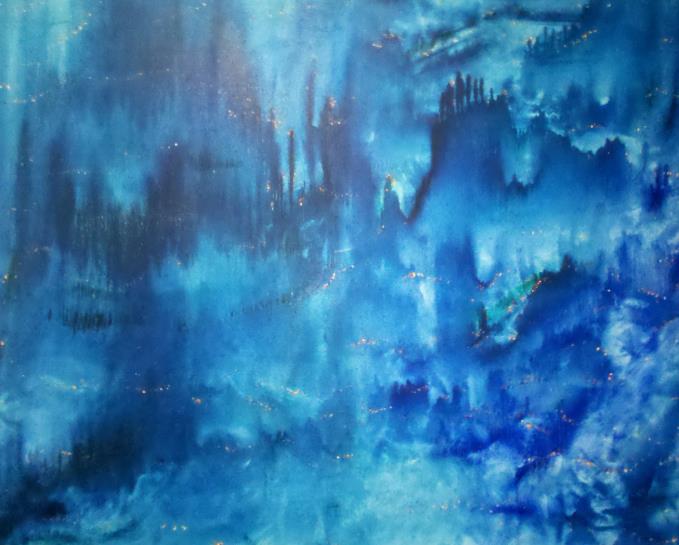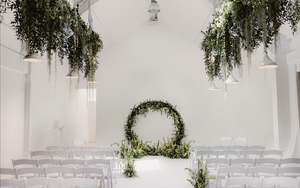PETER Corbett’s connections with the Liverpool art scene stretch back over many years, having first trained under Maurice Cockerell at Liverpool Art School and, latterly, under Brendan Neiland at Manchester College of Art and Design. Since then, he’s exhibited abroad on numerous occasions and won a number of renowned art prizes.
Having originally created Creative Mind Arts Collective in a disused warehouse in Manesty’s Lane back in the 1970s, he later went on to experiment with ambient music around in the 1980s. Since then, he’s published books of prose poetry entitled Tales from Erewhon (2001) and Pool of Life (2003) which synthesised the city's often unacknowledged artistic presence.
Metamorphosis is the second collaboration between him and Matthew Clough, curator of the University of Liverpool art collection, now housed in the handsomely restored Victoria Gallery and Museum on Brownlow Hill.
It's is more selective and personal than the first (a retrospective in Senate House in 2004 as part of the Liverpool Biennial), reflecting Corbett’s creative range over recent years, having been influenced by the eddies, undercurrents and sunlit-ripples emanating from deep within the Pool of Life.
![Kuumba Imani [2004]](https://assets.confidentials.com/uploads/imported/Assets/1/Kuumba Imani [2004].jpg) Kuumba Imani [2004]
Kuumba Imani [2004]Corbett's work is an amalgamation of influences ranging from Zen Buddhist meditation to organic cellular structures interwoven with a deep, often pervading spirituality. His painterly technique owes much to a unique style incorporating a self-discovered "double-edging" application which creates a series of random arcs reminiscent of bacterial lifeforms. This isn't accidental - it's a deliberate attempt to merge the worlds of a multi-dimensional science with fractal geometry which lend credence to chaos theory, if not the deeper elements of string theory. You could, almost, imagine that these symbiotic squiggles represent a snapshot of the fluid world of gluons, charms and quarks.
 Blue Zen (1998)
Blue Zen (1998)The impressions within his paintings create waves and patterns, fluid yet formal, each being dissected between themselves in an imaginary world of flux and reverse-flux. Not surprisingly, he describes each work, of whatever size or shape, as an adventure.
I’d go further. They’re more an abstract expression of the significant life-forces which Corbett believes to be a fundamental, indeed, essential element of existence without which all creative endeavour becomes meaningless.
This exhibition underpins his quiet and contemplative vision born of inwardness and spiritual vigour as an amalgam of science and mysticism
This equates well with the paradox of abstraction itself, which doesn’t need to provide concrete reference points to justify the primacy of colour and shape on its own terms. Taken together, his unique contribution embodies a visual celebration of the dedicated combination of New Science, Art and Mysticism.
It’s not without precedents, nominally in making the conscious effort to go forward where Kandinsky left off. According to Corbett, “very few later painters have pursued the theosophical and fourth dimensional ideas on which his and, indeed, Mondrian, Malevich and Arp were essentially based”. Furthermore, he states that this underground stream of inspiration comes from a direct connection with this underlying “cosmic force or primordial vibration of the Universe”.
It could argued that Corbett is acting as a perceptive channel through which these forces flow onto the canvas and honed through a devotion to a meditative, perhaps, trance-like epistemology. Yes, it’s that deep and isn’t part of the usual consensus within the local artistic community but I expect Corbett is very much at ease with it. This philosophy is as much part of his DNA as his double-edging technique.
![The World of the 5th Sun [2003]](https://assets.confidentials.com/uploads/imported/Assets/1/15613149.jpg) The World of the 5th Sun [2003]
The World of the 5th Sun [2003]In essence, then, Corbett’s work exists within the sphere of subliminal abstraction – created within a two-dimensional world but celebrating the possibilities of other, more esoteric dimensions. There’s no desire to justify their conceptual origins or rationalise their meanings. Conversely, this would undermine their personal significance. This exhibition underpins his quiet and contemplative vision born of inwardness and spiritual vigour as an amalgam of science and mysticism. It’s an entirely authentic collection of works which echo to the time-honoured Hindu phrase Satchitanand which pronounces that “Truth is the consciousness of bliss”.
Exhibition is free at the Victoria Gallery, Brownlow Hill, and runs until October 31.
![Peter and Lifewave I [1997]](https://assets.confidentials.com/uploads/imported/Assets/1/Peter and Lifewave I [1997].jpg) Peter and Lifewave I [1997]
Peter and Lifewave I [1997]














